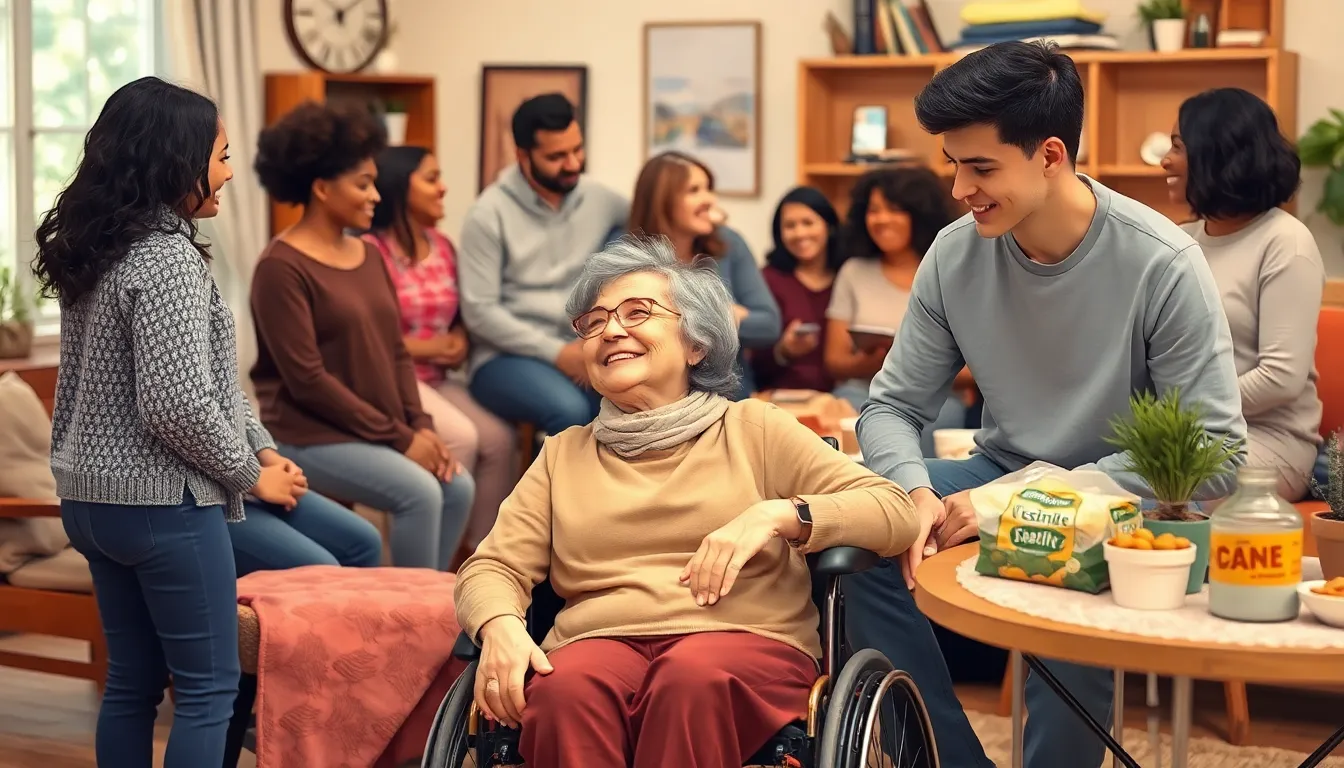Table of Contents
ToggleAs people age, they often face a silent but significant challenge: muscle loss. Known as sarcopenia, this condition affects strength and mobility, making everyday activities more difficult. It’s a common issue among the elderly, yet many remain unaware of its implications until it impacts their quality of life.
Understanding the causes and effects of muscle loss is crucial for maintaining health in later years. Factors such as inactivity, poor nutrition, and hormonal changes contribute to this decline. By addressing these elements early on, individuals can take proactive steps to preserve their muscle mass and enhance their overall well-being.
Overview of Elderly Muscle Loss
Elderly muscle loss, commonly known as sarcopenia, refers to the gradual decline in muscle mass and strength as individuals age. This condition affects approximately 30% of people over 60. Muscle loss leads to decreased functionality, increased frailty, and a higher risk of falls and fractures.
Several factors contribute to elderly muscle loss. Inactivity ranks as a primary cause. Regular physical activity, particularly resistance training, is crucial for maintaining muscle mass. Poor nutrition also plays a significant role, with inadequate protein intake often linked to muscle deterioration. Hormonal changes, like declines in testosterone and growth hormone, further exacerbate the problem.
Effects of muscle loss extend beyond physical appearance. Reduced muscle strength limits mobility, making daily tasks difficult. This decline can lead to social isolation and decreased mental health. Combating muscle loss involves targeted interventions focused on exercise, nutrition, and lifestyle changes. Maintaining an active lifestyle and consuming a balanced diet rich in protein can help preserve muscle mass and enhance overall well-being.
Causes of Elderly Muscle Loss

Understanding the causes of elderly muscle loss, or sarcopenia, is crucial for implementing preventative strategies. Several interconnected factors contribute to this condition, which significantly impacts quality of life.
Aging Process
Aging inherently leads to changes in muscle composition. Muscle fibers decrease in number and size, particularly type II fibers responsible for strength and power. Research indicates that starting in the third decade of life, muscle mass declines at a rate of approximately 3% to 8% per decade. This reduction accelerates beyond age 75. Additionally, the body’s ability to synthesize protein diminishes with age, further exacerbating muscle atrophy.
Lifestyle Factors
Inactivity plays a central role in muscle loss among the elderly. Sedentary lifestyles significantly contribute to decreased muscle mass and strength. For instance, studies show that older adults who engage in regular physical activity experience better muscle preservation compared to their inactive counterparts. Nutritional deficiencies, particularly inadequate protein intake, also hinder muscle maintenance. The recommended dietary allowance for protein in older adults is 1.0 to 1.2 grams per kilogram of body weight. Poor hydration and a lack of essential vitamins and minerals can further impair muscle function.
Health Conditions
Chronic health conditions contribute to muscle loss in the elderly. Diseases such as diabetes and heart disease can accelerate muscle wasting. Conditions like arthritis lead to decreased physical activity due to pain, perpetuating a cycle of muscle degradation. Additionally, hormonal changes, including reduced testosterone and growth hormone levels, directly affect muscle mass. Inflammation associated with various chronic illnesses can also impede muscle protein synthesis, leading to further deterioration of muscle health.
Consequences of Elderly Muscle Loss
Elderly muscle loss, or sarcopenia, leads to significant repercussions that affect individuals’ physical and mental well-being. Understanding these consequences is vital for promoting awareness and encouraging interventions.
Physical Impacts
Physical impacts of muscle loss in the elderly are profound. Reduced muscle mass directly correlates with diminished strength and functionality, limiting daily activities like walking, climbing stairs, or lifting objects. Individuals may experience increased frailty, with studies indicating that approximately 50% of frail older adults exhibit muscle loss. This decline in strength amplifies the risk of falls, contributing to injuries such as fractures and hospitalizations. Furthermore, loss of muscle affects metabolic health, leading to increased adiposity and conditions like obesity and diabetes. Muscle mass declines at an alarming rate of 3% to 8% per decade after age 30, worsening significantly after 75, which exacerbates the aforementioned risks.
Psychological Effects
Psychological effects of muscle loss can be as debilitating as physical ones. Loss of mobility and independence often leads to feelings of frustration and helplessness. Studies show that seniors with muscle loss experience higher rates of depression and anxiety. Isolation may also occur when activities become challenging, contributing to decreased social engagement. Cognitive health may decline as well, with research linking physical activity to improved mental functioning. Maintaining muscular strength plays a role in enhancing self-esteem and overall quality of life, making it crucial to address muscle loss proactively.
Prevention and Management Strategies
Implementing effective prevention and management strategies is essential for combating elderly muscle loss. Focused efforts in nutrition, exercise, and medical interventions can enhance muscle preservation and overall health.
Nutrition and Diet
Emphasizing a balanced diet rich in protein plays a critical role in preventing muscle loss. Seniors require approximately 1.0 to 1.2 grams of protein per kilogram of body weight per day. Key protein sources include lean meats, fish, dairy products, legumes, and nuts. Incorporating nutrient-dense foods, such as fruits and vegetables, ensures adequate intake of vitamins and minerals essential for muscle function. Additionally, hydration is vital; seniors should maintain fluid intake to support overall health and optimize muscle performance.
Exercise Regimens
Engaging in regular exercise significantly contributes to muscle maintenance. Resistance training should occur at least 2 to 3 times per week, focusing on major muscle groups. Activities like weight lifting, resistance band exercises, and bodyweight exercises help counteract age-related muscle decline. Balance and flexibility exercises, such as yoga or tai chi, enhance stability and reduce fall risk. Including aerobic activities, such as walking or swimming, improves cardiovascular health and supports overall fitness. Consistency and gradual progression are essential for achieving sustained benefits.
Medical Interventions
Consulting healthcare professionals can provide tailored interventions for managing muscle loss. Physical therapists can create customized exercise plans to address individual needs and limitations. Nutritional supplementation, including protein powders or amino acids, may be beneficial for seniors struggling to meet their nutritional requirements through food alone. Monitoring and managing underlying health conditions, such as diabetes or hormonal imbalances, are crucial for optimizing muscle health. Regular medical check-ups can ensure early detection of complications related to muscle loss, allowing for timely intervention.
Elderly muscle loss is a significant concern that demands attention and proactive measures. Understanding its causes and effects is vital for seniors and their caregivers. By prioritizing regular physical activity and a protein-rich diet, individuals can combat the decline in muscle mass and maintain their strength and mobility.
Implementing tailored exercise programs and nutritional strategies can lead to improved quality of life. Staying informed and engaged in health management is crucial for preventing the debilitating effects of sarcopenia. Embracing these changes not only enhances physical well-being but also supports mental health and social engagement, allowing seniors to live more fulfilling lives.



